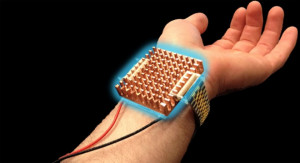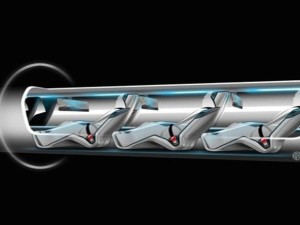You may have seen some buzz on Twitter and all along the interwebs 🙂 about this fantasy Hyperloop idea by billionaire Elon Musk. Musk is no newcomer to big things. He’s the founder of such enterprises as PayPal, SpaceX and Tesla Motors, among others. The Hyperloop idea may have been a little too daunting for most skeptics at fir to launch at first, but German entrepreneur, Dirk Ahlborn, is about to make it really happen. Using glass tubes (seems a tad vulnerable – just saying), cylindrical pods would transport people and potentially commercial cargo, at speeds approaching nearly 800 mph. How? Using low-pressure cabins (like an airplane at high altitudes) along with a vacuum sealed tube in which to travel in, results in minimal inertia. While professional race cars may reach pressures of 4G in some cases, occupants of the Hyperloop pods would be experiencing 1G – just like a bus ride, essentially… making a trip from Los Angeles to New York only about 45 minutes. That doesn’t include the security, check in and other delays of travel, of course. The video below gives a pretty good overview of how they realistically believe they can have some operational travel happening in about two years thanks to crowdsourcing.
Archive | science
Personal, Portable Air Conditioning Could Save Money & Energy
 Scientists at MIT took a nod from Psychology 101. One of the basic things you learn in any intro to psychology course is a concept known as “just noticeable difference.” You’re driving down the road, jamming to your favorite song, with the speakers cranked up all the way… you stop the car, get out and go into work. Hours later, you hop into your car to head home and when you start the car, you about jump out of your skin because the radio is so ridiculously loud, you can barely stand it. It is no higher in volume than what you listened to on the way to work – but the just noticeable difference is what makes you lunge toward the volume dial at mach speed.
Scientists at MIT took a nod from Psychology 101. One of the basic things you learn in any intro to psychology course is a concept known as “just noticeable difference.” You’re driving down the road, jamming to your favorite song, with the speakers cranked up all the way… you stop the car, get out and go into work. Hours later, you hop into your car to head home and when you start the car, you about jump out of your skin because the radio is so ridiculously loud, you can barely stand it. It is no higher in volume than what you listened to on the way to work – but the just noticeable difference is what makes you lunge toward the volume dial at mach speed.
The Wristify team used this principle to make a wearable device that can be worn like a watch or bracelet that can heat or cool the person wearing it. By sending cool or warm pulses along the blood flow in the wrists, the person wearing the device gets the feeling of being warmer or cooler than they would normally. They are working on finalizing real products you can buy and wear. Whether it’s being used by a menopausal woman going through hot flashes, or an athlete that needs a post-workout cool-down, the Wristify has some very practical applications. It uses far less power than a personal electric heater or a window-unit air conditioning unit, and can be effective a lot quicker than those methods.
You can read more about the project on MIT’s news site.

